Hongyu Lu
Slow Thinking for Sequential Recommendation
Apr 13, 2025Abstract:To develop effective sequential recommender systems, numerous methods have been proposed to model historical user behaviors. Despite the effectiveness, these methods share the same fast thinking paradigm. That is, for making recommendations, these methods typically encodes user historical interactions to obtain user representations and directly match these representations with candidate item representations. However, due to the limited capacity of traditional lightweight recommendation models, this one-step inference paradigm often leads to suboptimal performance. To tackle this issue, we present a novel slow thinking recommendation model, named STREAM-Rec. Our approach is capable of analyzing historical user behavior, generating a multi-step, deliberative reasoning process, and ultimately delivering personalized recommendations. In particular, we focus on two key challenges: (1) identifying the suitable reasoning patterns in recommender systems, and (2) exploring how to effectively stimulate the reasoning capabilities of traditional recommenders. To this end, we introduce a three-stage training framework. In the first stage, the model is pretrained on large-scale user behavior data to learn behavior patterns and capture long-range dependencies. In the second stage, we design an iterative inference algorithm to annotate suitable reasoning traces by progressively refining the model predictions. This annotated data is then used to fine-tune the model. Finally, in the third stage, we apply reinforcement learning to further enhance the model generalization ability. Extensive experiments validate the effectiveness of our proposed method.
Universal Item Tokenization for Transferable Generative Recommendation
Apr 06, 2025Abstract:Recently, generative recommendation has emerged as a promising paradigm, attracting significant research attention. The basic framework involves an item tokenizer, which represents each item as a sequence of codes serving as its identifier, and a generative recommender that predicts the next item by autoregressively generating the target item identifier. However, in existing methods, both the tokenizer and the recommender are typically domain-specific, limiting their ability for effective transfer or adaptation to new domains. To this end, we propose UTGRec, a Universal item Tokenization approach for transferable Generative Recommendation. Specifically, we design a universal item tokenizer for encoding rich item semantics by adapting a multimodal large language model (MLLM). By devising tree-structured codebooks, we discretize content representations into corresponding codes for item tokenization. To effectively learn the universal item tokenizer on multiple domains, we introduce two key techniques in our approach. For raw content reconstruction, we employ dual lightweight decoders to reconstruct item text and images from discrete representations to capture general knowledge embedded in the content. For collaborative knowledge integration, we assume that co-occurring items are similar and integrate collaborative signals through co-occurrence alignment and reconstruction. Finally, we present a joint learning framework to pre-train and adapt the transferable generative recommender across multiple domains. Extensive experiments on four public datasets demonstrate the superiority of UTGRec compared to both traditional and generative recommendation baselines.
Computationally-Efficient Linear Periodically Time-Variant Digital PLL Modeling Using Conversion Matrices and Uncorrelated Upsampling
Jan 26, 2024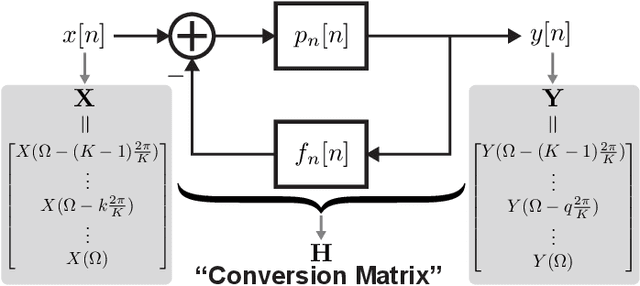
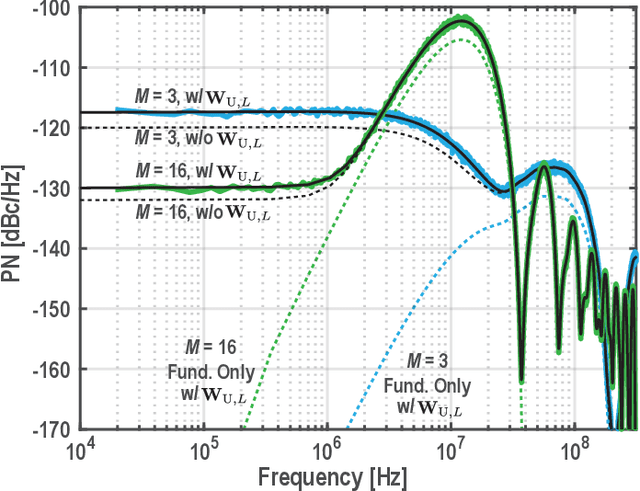
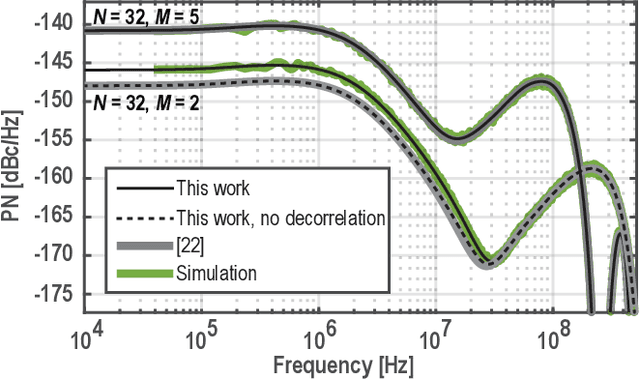
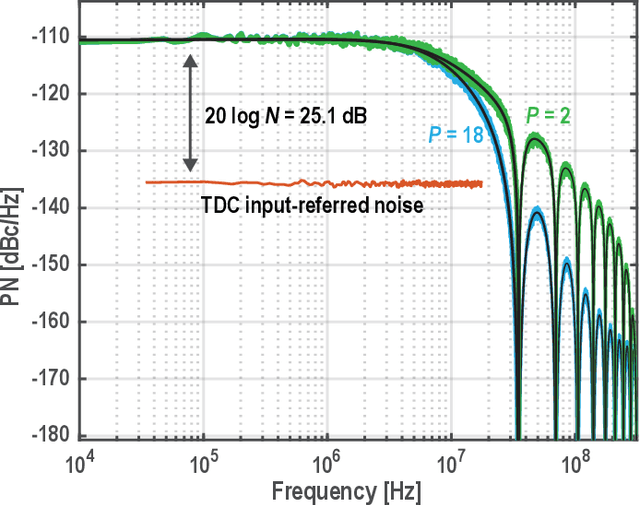
Abstract:This paper introduces a conversion matrix method for linear periodically time-variant (LPTV) digital phase-locked loop (DPLL) phase noise modeling that offers precise and computationally efficient results to enable rapid design iteration and optimization. Unlike many previous studies, which either assume linear time-invariance (LTI) and therefore overlook phase noise aliasing effects, or solve LPTV systems with noise folding and multiple sampling rate conversions that heightens modeling and computational complexity, the proposed conversion matrix method allows the designer to represent the LPTV systems using intuitive LTI-like transfer functions with excellent accuracy. Additionally, computational efficiency is improved through the uncorrelated upsampling method, which eliminates the need to consider beat frequency of noise sources with different sampling rates. The proposed algorithm is applied to modeling a DPLL with time-varying proportional loop gain, and the modeling accuracy is validated with Simulink transient simulations.
Cross Domain LifeLong Sequential Modeling for Online Click-Through Rate Prediction
Dec 11, 2023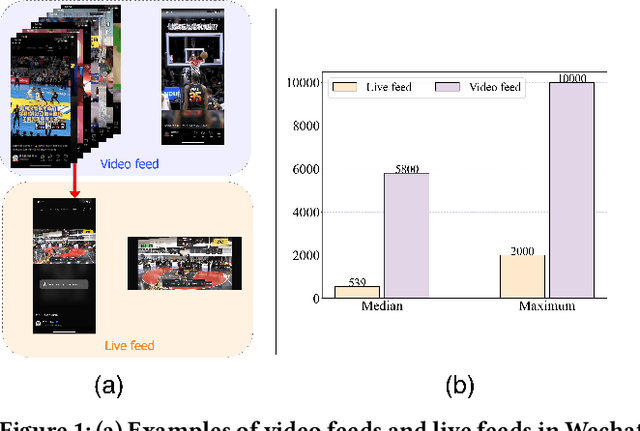

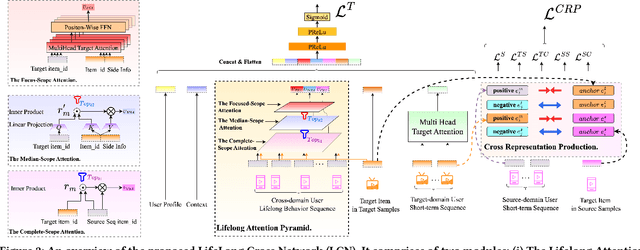
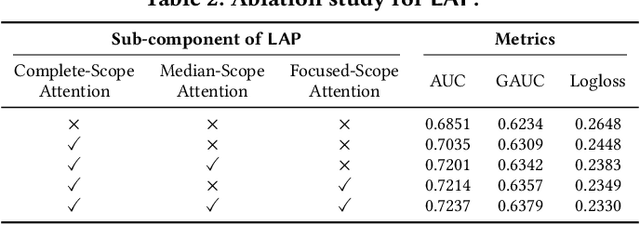
Abstract:Deep neural networks (DNNs) that incorporated lifelong sequential modeling (LSM) have brought great success to recommendation systems in various social media platforms. While continuous improvements have been made in domain-specific LSM, limited work has been done in cross-domain LSM, which considers modeling of lifelong sequences of both target domain and source domain. In this paper, we propose Lifelong Cross Network (LCN) to incorporate cross-domain LSM to improve the click-through rate (CTR) prediction in the target domain. The proposed LCN contains a LifeLong Attention Pyramid (LAP) module that comprises of three levels of cascaded attentions to effectively extract interest representations with respect to the candidate item from lifelong sequences. We also propose Cross Representation Production (CRP) module to enforce additional supervision on the learning and alignment of cross-domain representations so that they can be better reused on learning of the CTR prediction in the target domain. We conducted extensive experiments on WeChat Channels industrial dataset as well as on benchmark dataset. Results have revealed that the proposed LCN outperforms existing work in terms of both prediction accuracy and online performance.
Adapting Large Language Models by Integrating Collaborative Semantics for Recommendation
Nov 28, 2023Abstract:Recently, large language models (LLMs) have shown great potential in recommender systems, either improving existing recommendation models or serving as the backbone. However, there exists a large semantic gap between LLMs and recommender systems, since items to be recommended are often indexed by discrete identifiers (item ID) out of the LLM's vocabulary. In essence, LLMs capture language semantics while recommender systems imply collaborative semantics, making it difficult to sufficiently leverage the model capacity of LLMs for recommendation. To address this challenge, in this paper, we propose a new LLM-based recommendation model called LC-Rec, which can better integrate language and collaborative semantics for recommender systems. Our approach can directly generate items from the entire item set for recommendation, without relying on candidate items. Specifically, we make two major contributions in our approach. For item indexing, we design a learning-based vector quantization method with uniform semantic mapping, which can assign meaningful and non-conflicting IDs (called item indices) for items. For alignment tuning, we propose a series of specially designed tuning tasks to enhance the integration of collaborative semantics in LLMs. Our fine-tuning tasks enforce LLMs to deeply integrate language and collaborative semantics (characterized by the learned item indices), so as to achieve an effective adaptation to recommender systems. Extensive experiments demonstrate the effectiveness of our method, showing that our approach can outperform a number of competitive baselines including traditional recommenders and existing LLM-based recommenders. Our code is available at https://github.com/RUCAIBox/LC-Rec/.
Scaling Law of Large Sequential Recommendation Models
Nov 19, 2023Abstract:Scaling of neural networks has recently shown great potential to improve the model capacity in various fields. Specifically, model performance has a power-law relationship with model size or data size, which provides important guidance for the development of large-scale models. However, there is still limited understanding on the scaling effect of user behavior models in recommender systems, where the unique data characteristics (e.g. data scarcity and sparsity) pose new challenges to explore the scaling effect in recommendation tasks. In this work, we focus on investigating the scaling laws in large sequential recommendation models. Specially, we consider a pure ID-based task formulation, where the interaction history of a user is formatted as a chronological sequence of item IDs. We don't incorporate any side information (e.g. item text), because we would like to explore how scaling law holds from the perspective of user behavior. With specially improved strategies, we scale up the model size to 0.8B parameters, making it feasible to explore the scaling effect in a diverse range of model sizes. As the major findings, we empirically show that scaling law still holds for these trained models, even in data-constrained scenarios. We then fit the curve for scaling law, and successfully predict the test loss of the two largest tested model scales. Furthermore, we examine the performance advantage of scaling effect on five challenging recommendation tasks, considering the unique issues (e.g. cold start, robustness, long-term preference) in recommender systems. We find that scaling up the model size can greatly boost the performance on these challenging tasks, which again verifies the benefits of large recommendation models.
Streaming CTR Prediction: Rethinking Recommendation Task for Real-World Streaming Data
Jul 14, 2023



Abstract:The Click-Through Rate (CTR) prediction task is critical in industrial recommender systems, where models are usually deployed on dynamic streaming data in practical applications. Such streaming data in real-world recommender systems face many challenges, such as distribution shift, temporal non-stationarity, and systematic biases, which bring difficulties to the training and utilizing of recommendation models. However, most existing studies approach the CTR prediction as a classification task on static datasets, assuming that the train and test sets are independent and identically distributed (a.k.a, i.i.d. assumption). To bridge this gap, we formulate the CTR prediction problem in streaming scenarios as a Streaming CTR Prediction task. Accordingly, we propose dedicated benchmark settings and metrics to evaluate and analyze the performance of the models in streaming data. To better understand the differences compared to traditional CTR prediction tasks, we delve into the factors that may affect the model performance, such as parameter scale, normalization, regularization, etc. The results reveal the existence of the ''streaming learning dilemma'', whereby the same factor may have different effects on model performance in the static and streaming scenarios. Based on the findings, we propose two simple but inspiring methods (i.e., tuning key parameters and exemplar replay) that significantly improve the effectiveness of the CTR models in the new streaming scenario. We hope our work will inspire further research on streaming CTR prediction and help improve the robustness and adaptability of recommender systems.
Large Language Models are Zero-Shot Rankers for Recommender Systems
May 15, 2023

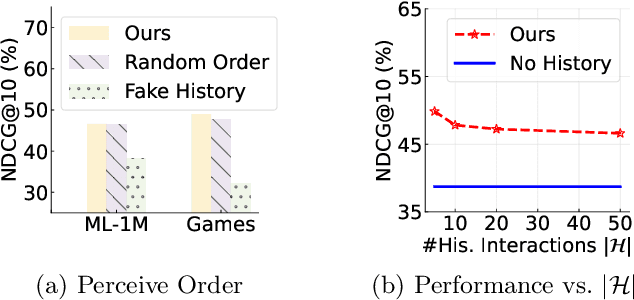
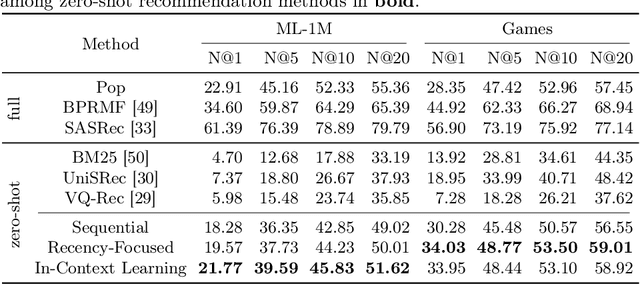
Abstract:Recently, large language models (LLMs) (e.g. GPT-4) have demonstrated impressive general-purpose task-solving abilities, including the potential to approach recommendation tasks. Along this line of research, this work aims to investigate the capacity of LLMs that act as the ranking model for recommender systems. To conduct our empirical study, we first formalize the recommendation problem as a conditional ranking task, considering sequential interaction histories as conditions and the items retrieved by the candidate generation model as candidates. We adopt a specific prompting approach to solving the ranking task by LLMs: we carefully design the prompting template by including the sequential interaction history, the candidate items, and the ranking instruction. We conduct extensive experiments on two widely-used datasets for recommender systems and derive several key findings for the use of LLMs in recommender systems. We show that LLMs have promising zero-shot ranking abilities, even competitive to or better than conventional recommendation models on candidates retrieved by multiple candidate generators. We also demonstrate that LLMs struggle to perceive the order of historical interactions and can be affected by biases like position bias, while these issues can be alleviated via specially designed prompting and bootstrapping strategies. The code to reproduce this work is available at https://github.com/RUCAIBox/LLMRank.
Improving Visual Recognition using Ambient Sound for Supervision
Dec 25, 2019



Abstract:Our brains combine vision and hearing to create a more elaborate interpretation of the world. When the visual input is insufficient, a rich panoply of sounds can be used to describe our surroundings. Since more than 1,000 hours of videos are uploaded to the internet everyday, it is arduous, if not impossible, to manually annotate these videos. Therefore, incorporating audio along with visual data without annotations is crucial for leveraging this explosion of data for recognizing and understanding objects and scenes. Owens,et.al suggest that a rich representation of the physical world can be learned by using a convolutional neural network to predict sound textures associated with a given video frame. We attempt to reproduce the claims from their experiments, of which the code is not publicly available. In addition, we propose improvements in the pretext task that result in better performance in other downstream computer vision tasks.
A United Image Force for Deformable Models and Direct Transforming Geometric Active Contorus to Snakes by Level Sets
May 07, 2012

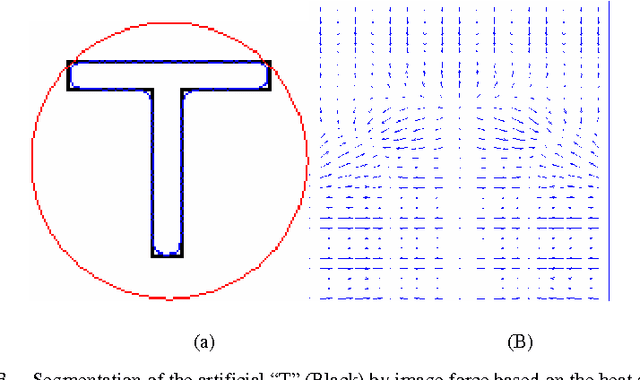

Abstract:A uniform distribution of the image force field around the object fasts the convergence speed of the segmentation process. However, to achieve this aim, it causes the force constructed from the heat diffusion model unable to indicate the object boundaries accurately. The image force based on electrostatic field model can perform an exact shape recovery. First, this study introduces a fusion scheme of these two image forces, which is capable of extracting the object boundary with high precision and fast speed. Until now, there is no satisfied analysis about the relationship between Snakes and Geometric Active Contours (GAC). The second contribution of this study addresses that the GAC model can be deduced directly from Snakes model. It proves that each term in GAC and Snakes is correspondent and has similar function. However, the two models are expressed using different mathematics. Further, since losing the ability of rotating the contour, adoption of level sets can limits the usage of GAC in some circumstances.
 Add to Chrome
Add to Chrome Add to Firefox
Add to Firefox Add to Edge
Add to Edge